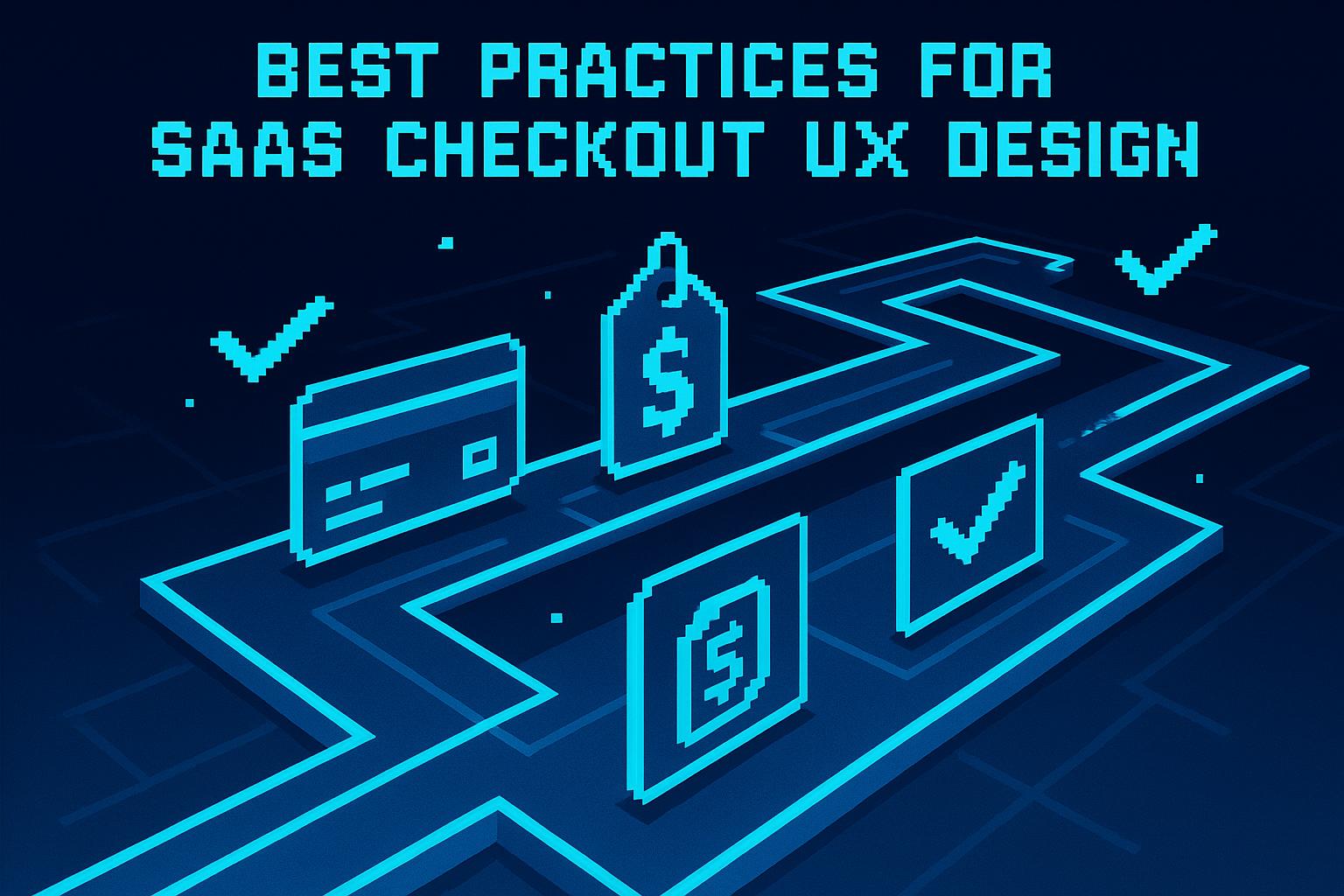Payment processing fees can eat into your SaaS profits, but there are ways to cut costs and boost efficiency. Here's how you can lower fees, improve workflows, and choose the right tools to save money and support growth:
- Negotiate with providers: High transaction volumes can give you leverage for better rates.
- Choose cost-effective tools: Look for transparent pricing and features like recurring billing.
- Automate billing and recovery: Use tools to handle failed payments and reduce churn.
- Streamline payment systems: Combine platforms and use analytics to optimize costs.
- Ensure compliance and security: Avoid penalties and reduce risks with proper safeguards.
Quick Tip: Stripe (2.9% + $0.30 per transaction) is a popular choice for U.S. SaaS companies, but alternatives like RazorPay (2.0%) or Paddle (5% + $0.50 with compliance support) might suit your needs better.
How SaaS Companies Can Profit from Credit Card Processing
How to Reduce Payment Processing Fees
SaaS companies can cut down on payment processing fees without sacrificing functionality by focusing on smart negotiations, selecting cost-efficient tools, and embracing automation. These strategies aim to reduce costs at every transaction point, ultimately improving profit margins.
Negotiate Lower Rates with Payment Providers
If your business processes a high volume of transactions, use that as leverage to negotiate better rates with payment providers. Providers often reward consistent, high-volume businesses with custom pricing plans. Start by reviewing your monthly transaction volume to understand your bargaining power. Then, explore options for long-term contracts - payment providers appreciate the stability of predictable revenue. You can also request to waive setup fees or minimum charges if your transaction flow is steady. Every percentage point saved directly contributes to your bottom line.
Once you've tackled negotiations, it's time to assess your payment tools for further savings.
Pick Low-Cost Payment Tools
The payment tools you choose can have a big impact on your fee structure. Look for providers with clear, upfront pricing - hidden charges can quickly eat into your profits. For example, tools like Stripe, which charges 2.9% + $0.30 per transaction, are popular for their transparency. However, there are also providers offering lower rates or solutions designed for businesses with recurring billing needs.
When evaluating options, consider your technical resources. Tools with higher customization capabilities may give you more control, but they often require developer input. On the other hand, no-code solutions can save time and effort upfront, though they might come with fixed monthly fees. Balance these factors to find the best fit for your business.
Next, let automation take over to streamline processes and minimize costs.
Automate Recurring Billing and Failed Payment Recovery
Automation is a game-changer when it comes to reducing payment-related costs. Implement automated recurring billing systems with retry protocols to prevent revenue loss from failed transactions.
Dunning management tools can also help. These tools send automated reminders to customers about billing issues, guiding them to resolve problems quickly and reducing involuntary churn. Additionally, services that automatically update expired payment methods and intelligent payment routing systems - designed to pick the most cost-effective processing option for each transaction - can further trim costs while keeping operations smooth.
Best Low-Cost Payment Processing Tools for SaaS
Finding the right low-cost payment processing tool can make a big difference in your profit margins. The challenge lies in choosing a solution that keeps fees low while also providing reliable features, like recurring billing, that SaaS businesses need. Here's a breakdown of some popular options for U.S.-based SaaS companies.
Payment Processing Tool Comparison
Payment providers vary in their pricing and features, so it's important to weigh your options carefully. Here's a quick look at how some of the top tools stack up:
| Provider | Pricing | Best For | Key Features |
|---|---|---|---|
| Stripe | 2.9% + $0.30 | Developer-friendly SaaS | Recurring billing, global support, extensive APIs |
| RazorPay | 2.0% | India-focused businesses | Local payment methods, developer tools |
| Kit Commerce | 3.5% + $0.30 | Creator-focused SaaS | Ecommerce integration, digital downloads |
| Mollie | 3.25% + €0.25 | EU-based SaaS companies | Local European support, versatile features |
| Creem | 3.9% + $0.40 | Modern SaaS startups | Clean interface, developer-friendly |
| Dodo Payments | 4.0% + $0.40 | Growing SaaS businesses | Recurring billing focus, competitive rates |
Stripe is a standout for many U.S. SaaS companies thanks to its transparent pricing and powerful developer tools. Meanwhile, RazorPay's 2% flat rate is ideal for businesses with high transaction volumes, particularly in India. If you're running a creator-focused platform, Kit Commerce offers a great blend of subscription and digital product management. For startups, Creem and Dodo Payments provide modern interfaces and competitive rates.
Next, let’s look at solutions that combine payment processing with compliance and operational support.
Merchant of Record Solutions
Merchant of Record (MoR) providers simplify operations by handling both compliance and payment processing. One leading example is Paddle, which charges 5% + $0.50 per transaction. While the fees are higher, they cover essential services like tax management and fraud protection, making it a strong choice for SaaS companies selling globally.
If your team has limited technical resources, check out the no-code and developer-friendly options below.
No-Code and Developer-Friendly Payment Setup Options
For businesses looking to minimize setup time and costs, here are some no-code and developer-friendly solutions:
- CheckoutPage: Priced at $29/month + 2.9%, this no-code platform allows you to create payment links and customer portals with ease.
- SendOwl: At $39/month, SendOwl is perfect for selling digital products, offering a user-friendly drag-and-drop interface.
- Polar.sh: A developer-friendly API solution with pricing at 4% + $0.40, Polar.sh offers flexible tools for seamless integration.
- Outseta: For $47/month + 2%, Outseta combines payment processing with customer management, providing a comprehensive all-in-one solution.
Your choice between no-code and developer-friendly tools will depend on your team's technical skills and your future customization needs. No-code platforms are great for quick and easy implementation, while developer-focused options offer more control as your business scales.
sbb-itb-a989baf
Improve Payment Workflows to Cut Costs
Refining payment workflows is a smart way to cut costs and enhance the customer experience. By integrating systems, leveraging analytics, and maintaining compliance, businesses can unlock savings while streamlining operations.
Combine Multiple Payment Systems
Bringing multiple payment systems under one roof can simplify processes and reduce costs. Instead of juggling separate platforms for tasks like subscription billing and one-time purchases, create a centralized payment hub that handles everything efficiently.
For instance, you could pair Stripe's flexible API capabilities (2.9% + $0.30 per transaction) with a no-code tool like CheckoutPage ($29/month + 2.9%) to generate payment links quickly. This approach consolidates functions while freeing up technical resources for more complex projects.
Another cost-saving tactic is integrated routing, which directs transactions to the most cost-effective provider based on factors like payment method, transaction size, or customer location. Over time, this strategy can help optimize fees and improve your bottom line.
Finally, use analytics to uncover even more opportunities for efficiency.
Use Analytics and Monitoring
Real-time payment analytics can reveal inefficiencies that aren't immediately obvious. By monitoring metrics like transaction success rates, decline patterns, and fee structures, you can pinpoint areas for improvement.
For example, tracking authorization rates can help identify issues that lead to retry fees, while analyzing failed payments can offer insights into customer behavior. Acting quickly on these findings can prevent cancellations and improve overall performance.
Set up automated alerts for fee spikes or low success rates to resolve issues promptly. While many payment providers offer built-in analytics, third-party tools can provide a broader view across multiple systems. Additionally, if you handle a large volume of international payments, geographic analysis can help identify regional providers with better rates, saving you money in specific markets.
Maintain Security and U.S. Compliance
Building secure and compliant workflows not only protects your business but also reduces costs in the long run. Non-compliance with PCI DSS standards can lead to expensive remediation efforts and higher processing fees.
One effective strategy is tokenization, which replaces sensitive card data with secure tokens. This reduces your compliance burden and lowers the risk of data breaches. Most modern payment providers include tokenization as a standard feature - just make sure it's properly configured.
Encryption is another must-have. Ensure all payment data is encrypted both during transmission and while stored. Gaps in encryption can create compliance risks and increase costs, so regular audits of your encryption practices are essential.
Periodic reviews of your payment workflows can also highlight areas for improvement, such as data handling, access controls, and integration security. Staying compliant not only keeps you in good standing with payment providers but can also lead to better rates.
Fraud prevention tools are another key investment. Reducing chargebacks through advanced fraud detection measures can save significant costs. For higher-risk transactions, consider implementing 3D Secure authentication. While it adds a step to the checkout process, it shifts liability for fraudulent transactions to the card issuer and may even secure lower interchange rates.
Practical Tips for SaaS Businesses
Making smart payment choices can improve profit margins and simplify operations for SaaS companies. These tips build on earlier strategies like negotiating rates and automating billing, helping you reduce fees even further.
How to Choose the Right Payment Provider
Choosing the right payment provider is essential for long-term efficiency and scalability. It's not just about finding the lowest rates - it's about selecting a provider that fits your specific needs. For example, if your team has developers, look for providers offering flexible APIs. If your team is smaller or less technical, prioritize providers with no-code options. Recurring billing capabilities should also be a top priority.
If your SaaS business primarily serves U.S. customers, go with a provider optimized for the U.S. market. Make sure they comply with key regulations like PCI DSS and GDPR to avoid unexpected costs. Aligning your provider with your compliance and growth goals can save you headaches down the road.
Take full advantage of the provider's support resources to make your setup process smoother.
Use Support Resources for Setup and Improvement
A good payment provider doesn't just process transactions - they help you get up and running efficiently. Many offer dedicated support teams to resolve issues and guide you through integrating their systems. Use their detailed documentation and developer APIs to save time and reduce integration costs. Some providers even go the extra mile, offering advice on adopting payment systems, improving sales, and refining marketing strategies, adding even more value to their services.
Conclusion: Lower Payment Processing Fees
Cutting down on payment processing fees isn't just about trimming expenses - it's about laying the groundwork for a scalable, efficient operation. The strategies we've explored here can help you save on transaction costs while streamlining your payment processes.
Key Takeaways for SaaS Owners
To effectively manage costs, consider a mix of tactics: negotiate better rates, switch to more affordable tools, and automate tasks like recurring billing and failed payment recovery. By integrating payment systems with analytics and maintaining strong security compliance, you can achieve both cost savings and operational reliability. Remember, the cheapest option isn't always the best - focus on balancing cost, functionality, and dependability in a unified system.
Regular reviews are essential. Payment processing methods and tools evolve quickly, and what works today might not be the best choice in the near future. Staying proactive with these strategies can help you build a payment system that's both cost-efficient and scalable.
Building Scalable and Efficient Payment Systems
Subscription models naturally allow SaaS businesses to grow revenue alongside their user base, without a matching increase in customer acquisition costs. But to truly support global growth, your payment systems need to be just as adaptable.
Avoid the pitfalls of a fragmented payment stack - using different providers for various locations or payment methods can lead to inefficiencies, integration headaches, and higher costs. Instead, choose payment providers that can scale with you, offering support across multiple markets through a single integration.
A strong payment infrastructure doesn’t just save money - it enables global expansion by accommodating local payment preferences, navigating regulations, and simplifying operations. When considering payment systems, look beyond just the fees. Think about how these systems align with your long-term growth goals.
The strategies outlined here can guide you in building payment systems that scale effectively while keeping costs in check. Start small, track your progress, and refine your approach based on what works best for your business.
FAQs
What are the best strategies for SaaS companies to lower payment processing fees?
SaaS companies have a real opportunity to cut down on payment processing fees by negotiating with their providers - especially when it’s time to renew contracts. Providers often value clients with strong transaction volumes and long-term potential, so emphasizing these points can work in your favor. Take the time to understand their pricing model, and look closely at markup percentages or extra fees that might be up for discussion.
It’s also smart to regularly review your transaction data. This can help you spot patterns or inefficiencies that may be driving up costs unnecessarily. On top of that, using tools designed specifically for recurring billing models can simplify your payment processes and reduce avoidable expenses. Staying proactive and well-informed not only saves money but also keeps your operations efficient and user-friendly.
How does automation improve recurring billing and recover failed payments for SaaS businesses?
Automation takes the hassle out of recurring billing and failed payment recovery for SaaS businesses. By handling tasks like sending follow-ups for overdue payments, it cuts down on manual work and streamlines operations. Automated retry systems are particularly effective, recovering a large chunk of failed payments caused by issues like insufficient funds, which directly helps increase revenue.
On top of that, automation improves cash flow, trims administrative expenses, and helps retain customers by ensuring payments are processed smoothly and failed transactions are quickly resolved. This gives businesses the freedom to concentrate on growth while delivering a hassle-free payment experience to their customers.
Why should SaaS companies integrate payment systems with analytics and ensure compliance?
Integrating payment systems with analytics offers SaaS companies a clearer picture of customer behavior, paving the way to optimize revenue streams and identify opportunities for upselling or cross-selling. These insights not only streamline operations but also set the stage for meaningful business growth.
At the same time, adhering to standards like PCI DSS is crucial. It safeguards sensitive payment information, reinforces customer trust, and helps avoid fines or damage to your brand's reputation. By combining secure practices with data-driven insights, businesses can build a solid foundation for sustainable growth.


